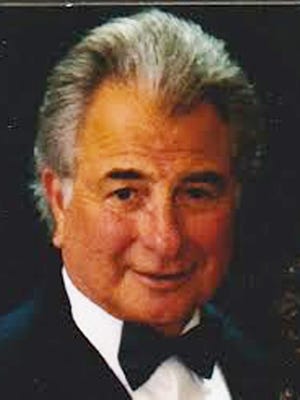25 years in the schools, Part 1
This fall semester is the beginning of my 25th school year in middle schools, high schools and colleges making financial literacy presentations. Regular readers know that I frequently make, and often refer to, these CARE presentations. In fact, in the school year before the pandemic shutdowns, I made over 250 presentations in 56 different schools.
What I want to do in this two-part series is set out a history of my work in financial literacy, and then talk about my recent experiences at Canandaigua Academy with the students in Tammy Franz’s Career and Financial Management first-semester classes, as well as some of my past experiences both there and with Kimberly Connal in the Middle School.

It all started in 1997, five years after I was sworn in as a Federal Bankruptcy Judge for the Western District of New York. Although I sat in Rochester, my jurisdiction included Canandaigua and all of Monroe and Ontario counties. In those five years, I found myself every day dealing with individual debtors. It was something that I had not done much of in my 18-year commercial practice before taking the bench, during which I represented 11 different banks at one time or another.
I was absolutely shocked by what I saw. People from every demographic, every age group, income level, educational level and geographic area, were making the same financial mistakes that they could not have, and would not have, made in the 1960s and early 1970s when I was growing up. Of course those were the days before credit cards, home equity loans, and 7 seven-year car loans. They didn’t have budgets to track their spending, so that they could make good choices about their spending, and they didn’t have savings for emergencies or anticipated expenses, let alone for a retirement with dignity. They didn’t know the difference between a need, on the one hand, and a want, wish, luxury, or convenience on the other hand, and they were willing to go deeply into unaffordable credit card debt for those non-needs. Furthermore, they didn’t really understand how they were being taken advantage of by the financial industry every day, like with those seven-year car loans.
So, by 1997, I had concluded that we had a National Epidemic of Financial Illiteracy, and that financial institutions were no longer bound by the same laws, rules and regulations that once often protected consumers. I felt that I could no longer just sit there cleaning up everyone’s messes every day, and not reach out and try to help the young people in my community. That is when I started going into the schools to share with students the unique knowledge, experiences, and stories about finances that being in the bankruptcy court every day teaches you.
In 2002, when my court was so busy I couldn’t get into all of the schools I wanted to, I went to the Monroe County Bankruptcy Bar Association and asked the members to join me in my crusade. They agreed, and the Credit Abuse Resistance Education (CARE) Program was born. We called it CARE, because we care about young people. At the urging of many in the bankruptcy community, I went on national media, wrote articles, and spoke at conferences to spread the word, and by 2009, CARE was in all 50 states and the District of Columbia. To learn more about CARE today visit Care4yourfuture.org.
So that’s my story and CARE’s story, as we try to end our National Epidemic of Financial Illiteracy.
As I began my 25th year this fall semester, I recently went to present to Tammy Franz’s Career and Financial Management classes at Canandaigua Academy, one of my favorite teachers and schools to visit. The students are always respectful, attentive, eager to learn, and they always have great questions and comments. But that is equally true of Kim Connal’s students in the Middle School. Canandaigua is definitely doing something right, and I am honored to write this weekly column for this community.
In Part II, I will include the Top Ten Lessons that I teach to in the high schools and some others in the middle schools, so that readers who have children can review them with their children. For now, here are some comments from the Academy.
Molly Urlacher: ”Think twice before buying food or drinks under $20 with a card.”
Makenna Crouse: “Don’t pay for anything with a credit card that you couldn’t afford with cash.”
Grace Corbett: “Using digital payments like credit cards and phones are turning money into a concept, cash is like an object.” “I learned to always save 20{1b90e59fe8a6c14b55fbbae1d9373c165823754d058ebf80beecafc6dee5063a} of any money I get.”
Mrs. Tammy Franz: “I feel that having Judge Ninfo come in to speak to my personal finance classes gives my students a truer sense of authenticity on this topic. This new perspective comes from someone who has seen the real-life consequences of people mismanaging their money in his bankruptcy courtroom.”
Leiana Baker: “I learned that I should never have more than one credit card.”
George Spinelli: “I learned that saving, good spending habits, hard work, and knowing the real value of money can keep you being the successful version of yourself.”
Grace Davis: “I learned that credit cards are the #1 cause of bankruptcy.”
Sarah Yoder, pictured with me and Tammy Franz, took more notes during a presentation than any student I can remember. She was kind enough to share them with me. Here are some of them. “Learn as much about finances as possible. You need a lot of Financial IQ. You need to revisit your budget all of the time. Be frugal not cheap. MONEY = HARD WORK. Everything you get – save part of it!!! Credit card debt = the worst debt. Avoid impulse buying by using more cash – CASH ON THE BARREL.”
She got it!
John Ninfo is a retired bankruptcy judge and the founder of the National CARE Financial Literacy Program. Find his previous weekly columns at http://www.mpnnow.com/search?text=Ninfo.








